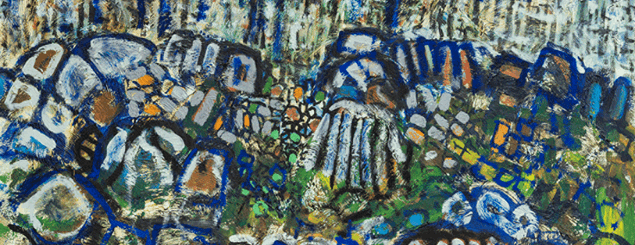Thoams Arge
The painter, Thomas Arge (1942-78) belonged to the second generation of artists on the Faroe Islands. That means he followed directly in the footsteps of artists such as Samuel Joensen-Mikines, Ingálvur av Reyni, Ruth Smith and Janus Kamban.
18 April - 14 June, 2015
Even as a child Arge was fascinated by drawing and painting, but it was an education as a carpenter that initially took up his time. After years as a bulwark constructor and, in the late 1950s, courses at the newly established painting school in Tórshavn on the side, in 1962 he made his debut at the annual Olai exhibition.
In 1964, this man from the Faroe Islands was admitted to the Royal Danish Academy of Fine Arts in Copenhagen, where his teacher was the Danish modernist, Richard Mortensen. It is said that there was a degree of conflict between the two of them. The teacher wanted his students to cultivate his personal passion for the non-figurative aspect of art and the basic elements of painting: colour, plane, line and space. But this did not tally with the stubborn Arge's tendency towards figuration and natural expressionism.
There is no doubt that Thomas Arge's works, like the artist himself, possessed a primordial force and ferocity. While other contemporary Faroese painters might have a tendency to cultivate the gentle, melancholy side of nature, Arge committed himself to a boldness that was new in terms of Faroese painting and a freedom in his treatment of that which was wild and unapproachable.
His expressive works also covered up a tense personality, which, in the last years of his life, was exacerbated by an ever increasing consumption of alcohol. Throughout his life, Arge was always searching for something with a temperament that matched the desperation, which is also evident in his intense paintings.
The tension between Arge's deeply subjective, sensory input and use of colour, on the one hand, and the subject and the external sensuous reality, on the other, remains strong and today he is considered one of the most original painters, not only in terms of the Faroe Islands, but also of Scandinavian art.
